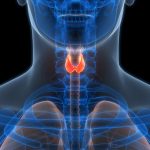
As personal trainers, supporting clients through life stages is essential to delivering meaningful, effective programming. Menopause—a natural, biological transition—marks a significant phase for women, often accompanied by changes in body composition, metabolism, mental health, and exercise capacity. Understanding the underlying physiology and evidence-based exercise strategies can empower trainers to tailor programs that address the unique needs of women in this stage.
Menopause – Etiology, Epidemiology, Physiology & Pathophysiology
Etiology and Definition
Menopause is defined as the complete cessation of ovarian function, resulting in the end of menstruation. It can occur naturally or as a result of medical interventions (e.g., chemotherapy, surgery), termed “iatrogenic” or “secondary menopause” (Davis & Baber, 2022).
- “It is termed ‘early’ if it occurs before age 45 and ‘premature’ if it happens before age 40. The global mean age for natural menopause is 48.8 years, showing slight geographic variation” (Davis & Baber, 2022).
Epidemiology
All women past midlife experience menopause. Symptoms affect a majority, with studies showing:
- “Symptoms include hot flushes, night sweats, or general warmth. About 75% of women experience VMS, while 28% of postmenopausal women under 55 report moderately to severely bothersome symptoms” (Davis & Baber, 2022).
- “Over 50% of perimenopausal and postmenopausal women report sleep disturbances, regardless of vasomotor symptoms” (Hulteen et al., 2023).
Physiology and Pathophysiology
Declining levels of estrogen (primarily estradiol or E2) drive most of the physiological changes associated with menopause. This hormonal shift influences:
- Glucose metabolism: “Estrogen insufficiency leads to decreased glucose disposal in muscle, increased food intake, and reduced physical activity, predisposing women to insulin resistance and type 2 diabetes mellitus (T2DM)” (Davis & Baber, 2022).
- Body fat distribution: “The decline in estrogen levels leads to central adipose tissue accumulation, causing a shift from gynoid to android fat distribution and an increase in total body fat” (Davis & Baber, 2022).
- Bone turnover: “Menopause accelerates bone resorption, exceeding formation via direct activation of osteoclasts and indirect effects through osteoblasts and T cells” (Davis & Baber, 2022). Bone mineral density (BMD) declines by 6.4% at the lumbar spine and 5% at the femoral neck during this transition.
The Role of Physical Activity During Menopause
Why Exercise Matters
Exercise has broad-reaching effects for women during menopause, from preserving lean mass to improving metabolic and mental health outcomes. According to Hulteen et al. (2023):
- “Detrimental body composition changes (i.e., increased fat mass, decreased fat-free mass, and bone density) exacerbate cardiometabolic risk and coincide with declines in physical activity during menopause.”
- “Postmenopausal women who exercised regularly had higher insulin sensitivity than those who were sedentary, regardless of hormone therapy status.”
Types of Exercise and Their Effects
Aerobic Exercise
Aerobic activity improves cardiovascular fitness and helps reduce fat mass:
- “A 6-month study showed that perimenopausal and postmenopausal women with overweight and obesity improved insulin sensitivity with combined aerobic and resistance or aerobic exercise alone, but not with resistance exercise alone” (Hulteen et al., 2023).
- Gonzalo-Encabo et al. found that increasing aerobic exercise volume from 150 to 300 minutes per week led to greater reductions in intra-abdominal fat, BMI, and total body fat in postmenopausal women (Marsh et al., 2023).
Resistance Training
Resistance training combats sarcopenia and improves BMD:
- “Resistance training was successful in preventing weight gain and adverse changes in body composition” (Marsh et al., 2023).
- “Intense exercises (70% to 90% of one’s maximum repetition) performed two to four times a week effectively improve muscle strength, bone density, and physical function” (Capel-Alcaraz et al., 2023).
- “Strength exercises decrease heart rate and hot flashes” and improve levels of estradiol, growth hormone, and IGF-1 (Capel-Alcaraz et al., 2023).
HIIT (High-Intensity Interval Training)
HIIT is a promising method for vascular and metabolic improvements:
- “These results allowed the authors to classify HIIT as a feasible training protocol for improving endothelial function among postmenopausal women” (Marsh et al., 2023).
Mind-Body Exercise (Yoga, Tai Chi, Qigong, MBSR)
Mind-body practices help alleviate psychological and physical symptoms:
- “Findings show that mind-body exercise is a safe, effective way to reduce bone loss, enhance sleep quality, alleviate anxiety and depression, and relieve fatigue in perimenopausal and postmenopausal women” (Xu et al., 2024).
- Yoga interventions showed improvements in “physical, urogenital, and total symptoms” (Money et al., 2024).
Sleep and Exercise
Exercise improves sleep quality, which in turn supports exercise adherence:
- “The sleep and PA link is bidirectional: poor sleep reduces PA, while increased relative PA is linked to better sleep quality” (Hulteen et al., 2023).
Exercise Recommendations for Menopausal Clients
General Guidelines
| Type of Exercise | Recommendation | Benefits |
| Aerobic Exercise | 150–300 minutes/week | Reduces visceral fat, improves cardiovascular health |
| Resistance Training | 2–3x/week (progressive) | Improves strength, BMD, hormonal profile |
| HIIT | 1–2x/week (moderate to vigorous) | Improves endothelial function and fat loss |
| Mind-Body Exercise | 2–3x/week | Enhances sleep, mood, and emotional well-being |
Key Programming Considerations
- Prioritize multimodal training (aerobic + resistance).
- Include balance and mobility work to reduce fall risk.
- Address individual symptoms (e.g., fatigue, sleep disruption, mood).
- Emphasize long-term consistency: “Exercise must be maintained for life” (Capel-Alcaraz et al., 2023).
- Provide supportive environments and track progress for motivation.
Conclusion
Menopause is a pivotal period in a woman’s life, presenting both challenges and opportunities for maintaining health and fitness. As a personal trainer, understanding the physiological changes and evidence-based exercise strategies allows you to provide impactful, empathetic, and individualized support. With consistent training, menopausal clients can reduce symptoms, improve quality of life, and thrive during this transition.
References
Capel-Alcaraz, A. M., López-López, L., Hita-Contreras, F., & Martínez-Amat, A. (2023). Effectiveness of strength training in postmenopausal women: A systematic review and meta-analysis. European Journal of Obstetrics & Gynecology and Reproductive Biology, 285, 79–88.
Davis, S. R., & Baber, R. (2022). Treating menopause. The Lancet, 400(10362), 1233–1244. https://doi.org/10.1016/S0140-6736(22)01436-7
Hulteen, R. M., Barha, C. K., McCurdy, A. P., & Davenport, M. H. (2023). The potential role of physical activity in the menopause transition: A narrative review. Obstetrics and Gynecology, 141(6), 1235–1243. https://doi.org/10.1097/AOG.0000000000005207
Marsh, C. E., Ainsworth, B. E., & Campbell, K. L. (2023). Effects of exercise on body composition and risk factors for cardiovascular disease in postmenopausal women: A systematic review and meta-analysis. Menopause, 30(4), 401–412.
Money, A., Walker, J., Jarrett, C., & Collett, J. (2024). Yoga for menopausal symptoms: A systematic review and meta-analysis. Maturitas, 180, 107767.
Xu, W., Wang, Z., Yang, R., & Zhang, L. (2024). Effectiveness of mind-body exercise on health outcomes in perimenopausal and postmenopausal women: A meta-analysis. International Journal of Environmental Research and Public Health, 21(2), 136.






